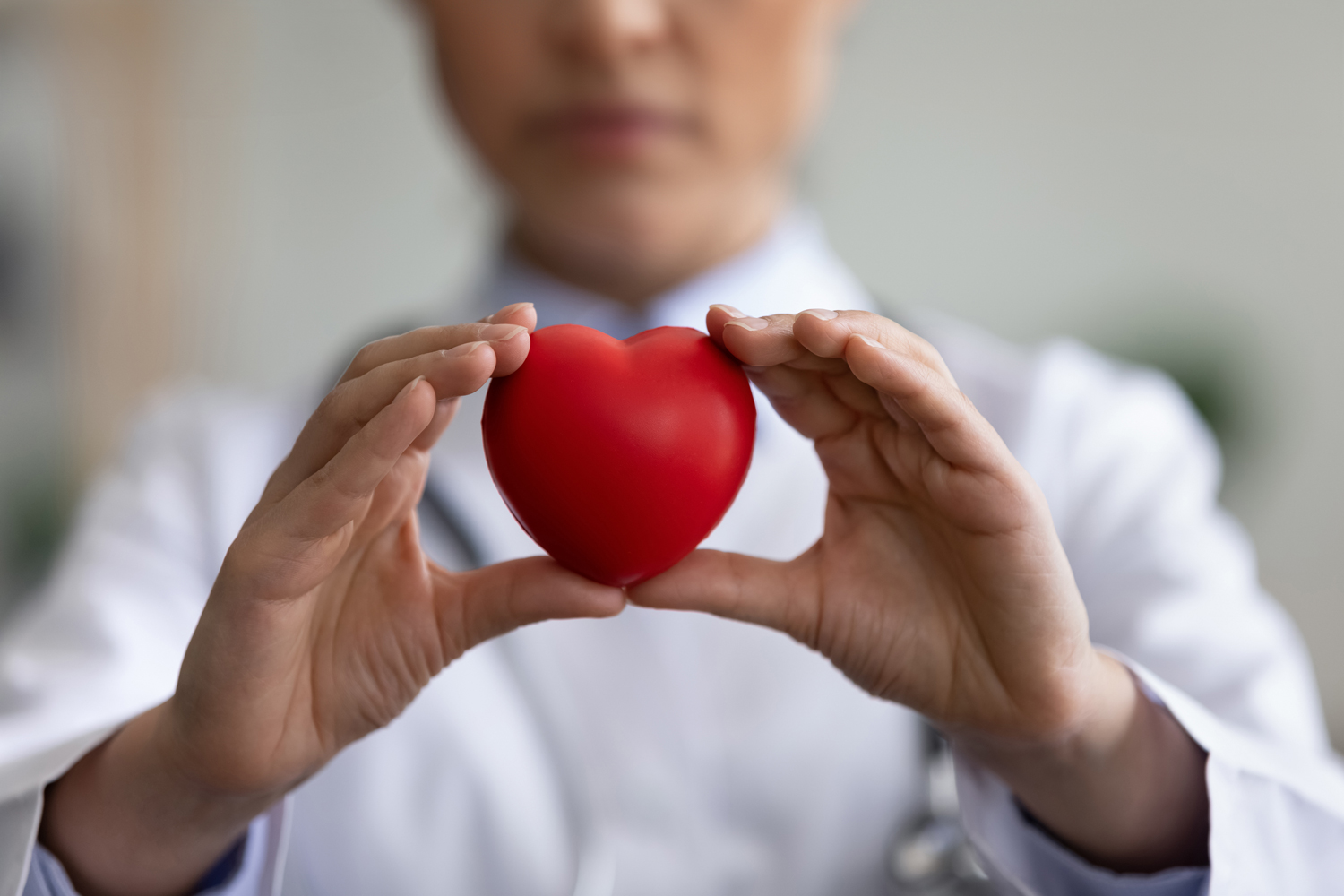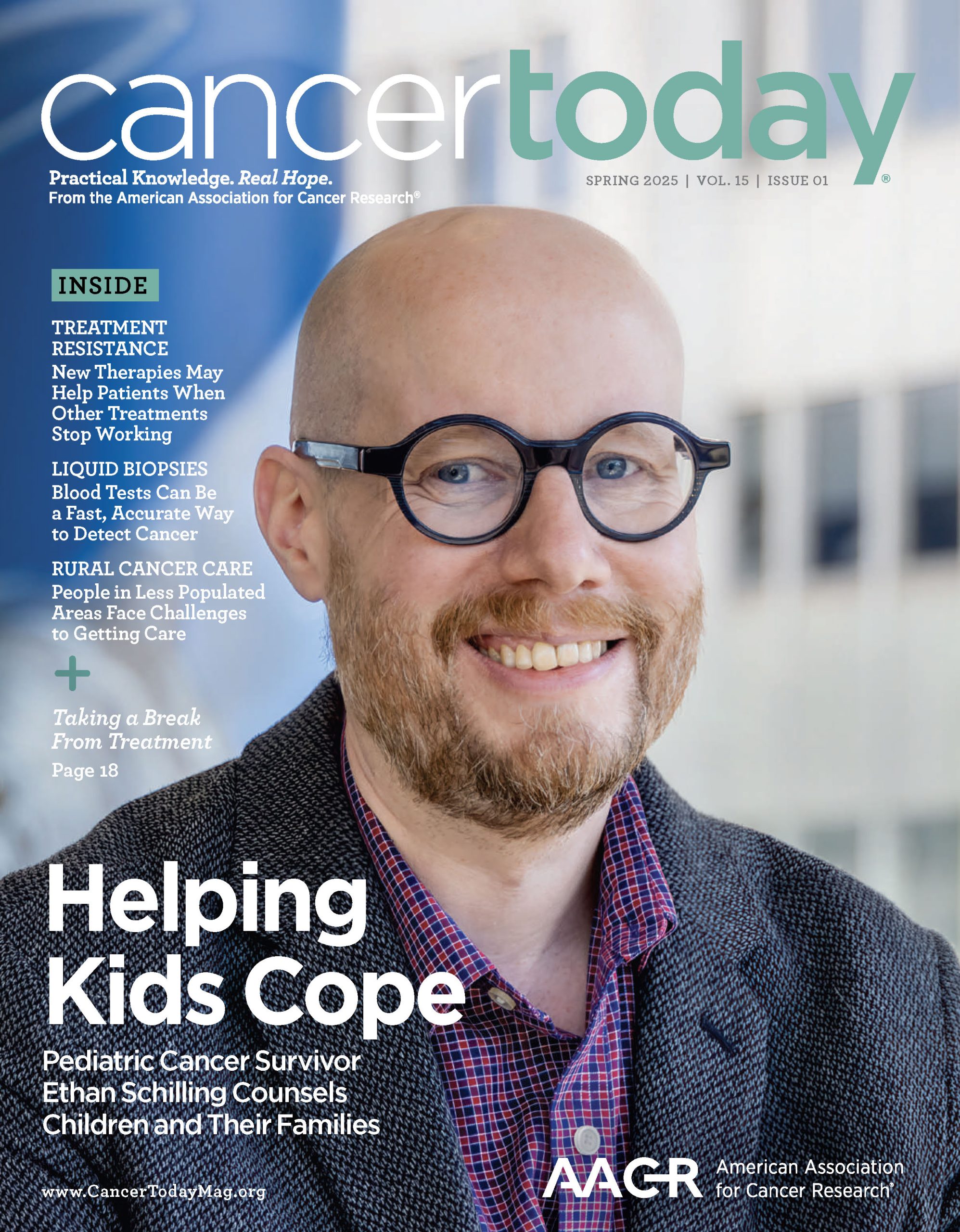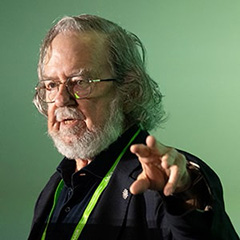PETER WOLF FIRST NOTICED an unusual sound in his chest in the spring of 2018. When he inhaled, especially after he exercised, he heard a distinct “gurgling”—like air pushing through fluids. It wasn’t painful, but it was accompanied by an uncomfortable shortness of breath, and it usually went away overnight.
Initially, Wolf, then 39 and a father of three young children, wasn’t too concerned. However, as months turned to years, the symptoms became more frequent and lasted longer. The fluid seemed to stay in his lungs for a full day, sometimes longer, and he continued to have shortness of breath. He used a pulse oximeter to measure the oxygen saturation of his blood and discovered that, during these episodes, his blood oxygen level dropped to the low 90s and sometimes into the 80s. A healthy person’s blood oxygen level should register between 95% and 100%. At 90%, physicians recommend people go to the emergency department to get checked for heart problems.
Wolf, who lives in Orlando, Florida, consulted with his primary care physician, who went through a list of possible causes. His doctor didn’t think it was related to exercise because it had come on so suddenly and didn’t return during stress tests. He didn’t think it was asthma because it wasn’t helped by an inhaler. The concerned physician sent Wolf to a pulmonologist and a cardiologist. His electrocardiogram (EKG) looked normal, and X-rays showed no signs of pneumonia.
When Wolf turned 40 in August 2018, the providers were still unable to find a cause for the strange sounds. “These were symptoms that normally aren’t associated with anybody my age,” Wolf says. In the spring of 2020, when COVID-19 was upending everything, he still had no diagnosis and resigned himself to living with the gurgling and shortness of breath.
At each medical visit, Wolf asked his doctors if the strange sounds could be related to his previous cancer treatment. One month before his 16th birthday, in the summer of 1994, Wolf was diagnosed with stage I nodular sclerosis Hodgkin lymphoma, a blood cancer that affects the white blood cells in the lymphatic tissue. He was treated with mantle field radiation, a treatment rarely used today but known for damaging the heart. Wolf says he brought up his cancer history and treatment at each doctor’s visit and felt like they didn’t give it serious thought. “They said, ‘No, it can’t be from that,’ or ‘Oh yeah, it could be from that,’ but … my cardiologists didn’t know what to do.”

Peter and Laura Wolf take a break during a family trip to Washington, D.C., in March 2024. Photo by Isaac Wolf
As the pandemic shifted from a full-blown crisis to a more manageable situation, Wolf’s symptoms worsened. In the fall of 2023, a full five years after the strange sounds began, Wolf underwent another round of stress tests and EKGs that revealed, finally, a definitive diagnosis: radiation-induced heart disease. He had diastolic dysfunction—a malfunction in the heartbeat—caused by radiation. His aortic valve was damaged and most likely would need to be replaced. His heart condition was directly related to the cancer treatment he’d received as a teen, according to his doctors. The same radiation that had saved his life in the 1990s was responsible for his health problems.
Cancer treatments save lives but can have long-lasting effects on health. One known casualty of many treatments is the heart. Anthracyclines, for example, are a cornerstone of chemotherapy treatment for many cancers. They’re often used to treat breast, bladder and soft tissue cancers, as well as many malignancies in children. But these drugs also increase the risk of cardiovascular problems, including congestive heart failure. Newer, more effective treatments like targeted drugs and immunotherapies also can damage the heart.
The good news is that many of these drugs effectively treat cancer and save lives. The five-year relative survival rate for Hodgkin lymphoma, the cancer Wolf was treated for, was 61% for people diagnosed in 1973 but is now around 90%, according to data from the National Cancer Institute and the American Society of Clinical Oncology. But as people live past their diagnosis, they face other health issues related to treatment.
“We know that, due to advances in early detection and treatment, many cancer survivors are now living longer, and they are actually more likely to die from or develop conditions other than their original cancer,” says Michaela Dinan, an epidemiologist at Yale Comprehensive Cancer Center in New Haven, Connecticut. Dinan and her colleagues published a study in July 2023 in JAMA Network Open showing that long-term survivors of breast, colorectal and prostate cancers in the U.S. were more likely to die of causes other than their cancer diagnosis. Among these deaths, cardiovascular disease was the leading cause. Their finding adds to a growing body of research that examines patients’ heart health after having cancer. A study published July 2022 in the Journal of the American College of Cardiology, for example, estimated a 42% increased risk of cardiovascular disease among cancer survivors, compared with people who had no history of cancer.
In the past couple of decades, research into the cardiovascular effects of cancer treatment has given rise to a specialty called cardio-oncology that brings together an interdisciplinary team to better understand, prevent and treat potential heart problems in cancer patients and survivors. “It really grew out of a grassroots interest” among oncologists and cardiologists, says Susan Dent, co-director of the cardio-oncology group at Duke Health in Durham, North Carolina. “Now, it’s grown to where organizations around the world recognize the importance of understanding cardiovascular health.”
Raising Awareness
Dent, a medical oncologist whose specialty is breast cancer, says doctors are aware of the risks of anthracycline-based treatments, but she first became interested in how cancer drugs in general impact the heart after the Food and Drug Administration (FDA) approved a drug called Herceptin (trastuzumab) for early-stage breast cancer that overexpressed the HER2 protein.
Interim results from clinical trials leading up to the 2006 approval showed that Herceptin, when combined with chemotherapy, reduced a patient’s risk of recurrence by 52% and the risk of death by 33%. However, the drug also carried the risk of damaging a person’s heart. When Herceptin was approved, the FDA recommended patients who were taking the drug receive tests that could measure the percentage of blood leaving the heart with each pump—usually measured through an echocardiogram—every three months during treatment. “We were seeing drops in how the heart squeezes,” Dent says. “We really didn’t know how to manage that.”
Back then, she says, oncologists often stopped giving potentially lifesaving treatment because they didn’t know how to manage possible cardiac consequences. Dent began meeting with a small group of cardiologists and oncologists “to see how we could manage this so we didn’t stop therapy for our patients.” In 2011, she helped start the Canadian Cardiac Oncology Network and later joined the nonprofit International Cardio-Oncology Society (IC-OS), where she is now president.
Complications around cardiac risks reach across all ages and cancer types, but the risk may be more pronounced in certain populations. One meta-analysis presented at a meeting on cardiovascular care of oncology patients held by the American College of Cardiology in April 2023 found that Black people being treated for cancer were 71% more likely to experience heart damage after chemotherapy than white people being treated for cancer.
Some studies have looked at the risks that come with radiation to areas near the heart, especially on the left side of the body. A study published in the New England Journal of Medicine in 2013 investigated cardiac events in more than 2,000 women treated with radiation for breast cancer between 1958 and 2001 in Sweden and Denmark. The researchers found that a woman’s risk of a major coronary event in the years following treatment increased with the amount of radiation she received, even 20 years later. The higher the radiation dose, the higher the risk.
“It’s not just radiation directly to the heart, but when you radiate the head or neck, you’re also affecting the vascular system, and you may be causing premature atherosclerosis or a narrowing of the blood vessels,” says Dent. “You have to consider all those structures in the radiation field.”
Listening to Patients
Dent says radiologists today try to minimize cardiac exposure using more focused beams or by more closely targeting the tumors. That wasn’t the case when Wolf was treated in 1994.
Wolf received mantle field radiation, which is administered to the chest, neck and armpit, as well as inverted Y field radiation, which extends further down the abdomen. “It goes pretty much from the base of your skull down to your diaphragm, down to where your legs start,” he says. This type of radiation, which dramatically improved survival rates for people with Hodgkin lymphoma in the second half of the 20th century, has largely been replaced by more effective regimens that include chemotherapy, immunotherapy or other types of radiation. Newer radiation approaches allow radiologists to shape the beam to the outline of the tumors, for example.
After losing her daughter to heart problems after cancer, Marta Blanco started a nonprofit to fund research and educate families.
In 2003, Marta Blanco’s 4-year-old daughter, Sofia, was diagnosed with non-Hodgkin lymphoma. “[The cancer] was very aggressive at the beginning,” says Blanco, a Miami resident. Like many other children with her diagnosis, Sofia was treated with Adriamycin (doxorubicin), an anthracycline that is a first-line treatment for this type of cancer.
Starting about eight months after she first received chemotherapy, Sofia couldn’t get comfortable enough to sleep because it was difficult to breathe. She was sweating profusely, “but, you know, Miami, it’s really hot,” Blanco says. Sofia’s doctors thought it might be a virus because she had a low-grade fever, Blanco recalls. They took X-rays and culture samples to rule out pneumonia and chalked up Sofia’s sleep troubles to nervousness about her next chemo infusion, Blanco adds. Looking back, Blanco says, “You start to realize how little people knew back then and how little they know now.”
Sofia was experiencing the beginning symptoms of heart failure caused by the anthracycline she took. Blanco and her family reached out to a cardio-oncology expert in Miami who prescribed a beta blocker and an ACE inhibitor. That treatment helped slow down the progression of the heart disease, but the damage from the anthracycline was already done. In the spring of 2012, Sofia was hospitalized with fluid buildup in her heart and lungs. After suffering a stroke and a serious fungal infection, Sofia died in the hospital in April 2012, shortly after her 13th birthday.
Her mother channeled her grief into Sofia’s Hope a nonprofit organization that provides funding for researchers and clinicians to study cancer treatment-related heart issues. Blanco also wants to raise awareness among parents of children with cancer and adult childhood cancer survivors of the potential negative impact of their treatment on heart health. She continues to wonder if the damage to Sofia’s heart could have been detected sooner and reduced in severity.
In 1995, the Food and Drug Administration approved a drug called dexrazoxane that could be used to reduce the risk of heart damage in women treated for breast cancer. Research led by pediatric cardiologist Steven Lipshultz at around the same time showed that the drug could prevent heart damage, at least in the short term, in children with leukemia treated with anthracyclines and other chemotherapy. But the treatment didn’t gain traction, partly because researchers didn’t know its long-term effects or risks. That may change: A study published April 20, 2023, in the Journal of Clinical Oncology followed nearly 200 childhood cancer survivors who had been treated with anthracyclines and were given dexrazoxane. The researchers connected use of dexrazoxane to a two-decade cardioprotective effect. Patients who received the drug showed lower risk of damage to the left ventricle, a common site of heart damage for patients who receive anthracyclines.
Sofia’s sudden heart failure is not typical for most children who undergo chemotherapy, but many children treated for cancer face heart problems when they are adults. “If maybe she had been given [dexrazoxane], I’m not going to say that she wouldn’t have had heart issues,” Blanco says. “But maybe they wouldn’t have been as severe.”
Blanco says parents can help their children by learning more about the risks—and what research says. “We can educate ourselves,” she says. On the Sofia’s Hope website, she and her team have compiled resources on health risks of cancer treatment for children. She has also worked with the International Cardio-Oncology Society to develop informational sheets on the heart risks associated with different cancers.
Wolf wishes he had known more about the long-term effects of his treatment, especially once the gurgling started. He credits the internet for finally providing the answer. One night in the summer of 2023, Wolf stumbled upon the website for the IC-OS and realized he had never put those words—cardio and oncology—together. Within a day, he had a call with the IC-OS, which connected him with additional specialists in cardio-oncology. Six weeks later, Wolf went to Mayo Clinic in Jacksonville, Florida, where he underwent more grueling tests, including a modified stress echocardiogram where he was asked to lie down instead of being upright. For the first time, the test successfully induced his shortness of breath, oxygen shortage and gurgling.
Wolf learned how mantle field radiation likely hurt his heart by damaging his mitral and aortic valves and his left ventricle. “I felt like a weight had been lifted off my shoulders because now I had found something that explained all my symptoms,” he says. His cardiologists put him on generic lisinopril, an ACE inhibitor to control blood pressure, and Jardiance (empagliflozin), a diabetes medication to control blood sugar and ease the workload on his heart. Still, the doctors told him he will likely need an aortic valve replacement in a few years.
Wolf now shares his story to advocate for more awareness and research about the cardiac risks that can come with cancer treatment. Researchers are developing guidelines to help clinicians guide patients who have been treated for cancer in the past and may face heart problems in the present or future. In 2016, Dent and the Canadian Cardiac Oncology Network worked with the Canadian Cardiovascular Society to produce guidelines that, among other things, recommended the preventive use of medications for hypertension and prolonged surveillance of heart health after people have been treated for cancer. In August 2022, the European Society of Cardiology issued its first guideline on cardio-oncology, intended to help clinicians care for the cardiovascular health of their patients before, during and after cancer treatment. Medications that manage blood pressure and otherwise protect the heart are a key part of the guidelines.
Dent says physicians need to balance the cardiovascular risks and treatment benefits for patients. She is convinced that with more research and a better understanding of how successful cancer treatments affect the heart, oncologists and cardiologists can find heart-friendly approaches to treatment. “We really just have to determine the risk,” she says.
Patients can push the field forward, too, says Wolf, by encouraging friends and family to pay close attention to their hearts and speak up if something seems off. He says he works as an advocate to raise awareness of cardiac issues for other people treated for cancer as kids. “Lots of people are coming up on their 20th, 25th year after cancer treatment, and they’ll start to have symptoms they don’t know what to do with,” he says. “I have three kids, and I missed out on five years of getting diagnosed. I don’t want that for anybody else.”
Cancer Today magazine is free to cancer patients, survivors and caregivers who live in the U.S. Subscribe here to receive four issues per year.





